Winnie Winkle was an American city girl familiar to anyone who watches television or movies today: Fashion-conscious, hard-working, simultaneously looking for the perfect mate and the perfect outfit.
Winnie Winkle sprang from the pen of Connecticut’s Martin Branner, who drew his inspiration for the comic-strip beauty from his long-time wife Edith Fabbrini. The couple met when Martin was 18 and Edith 15. They married and for 15 years headlined the vaudeville circuit as the dance team Martin and Fabbrini.
The couple hailed from New York, but settled in Waterford, Conn. They left the town a lasting legacy when they designed the town seal.

Mike Branner
Winnie Winkle
Martin left the theater to serve in World War I in the Chemical Warfare Service. When he returned from the war, he began developing his talent for drawing. He and Edith were exhausted by tapping out two and three shows a day on the Keith Orpheum and Pantages vaudeville circuits.
Looking for a way out of dancing, Martin started a short-lived comic strip called Louie the Lawyer. It made so little money he had to keep dancing while drawing on the side. He took another stab with Pete and Pinto. That strip, too, failed to catch fire.
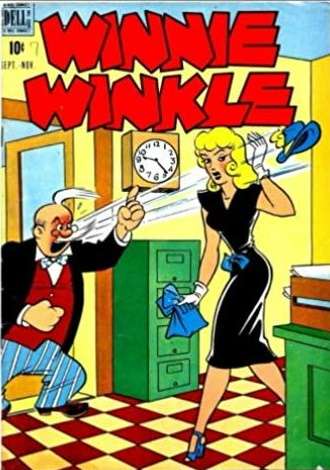
But in 1920, Branner hit the jackpot. There had been previous strips about working women. In 1907, Sally Snooks, a strip about a stenographer, appeared for about a year before it fizzled. Somebody’s Stenog started up in 1918. And publishers realized that with so many women taking up careers during World War I, the time was right for a character-driven comic strip about the travails of the young working woman.
Just months after ratification of the 19th Amendment gave women the vote, Winnie Winkle the Breadwinner came to life. Modeled on Edith, she appeared in newspapers in New York and Chicago. Winnie, a city girl, looked to cast off her working-class roots and rise into the middle class. But Branner made sure it wasn’t going to be easy.
Winnie was saddled with supporting her parents, who were anything but modern. Her dad, Rip, was a layabout. Winnie’s coworkers were clearly working class, lacking her ambition. Her adopted brother, Perry, was a constant source of irritation. He chafed at Winnie’s attempts to replace his country-boy tendencies with citified manners.
Ambition
While Branner got some laughs at the expense of Winnie’s backward-thinking friends and family, there was always a sly subtext to his storylines. He hinted that Winnie’s pursuit of sophistication and all the fashionable trappings of the upper classes was misguided.
Winnie was on a nonstop mission to dress perfectly, find the right husband and mold her brother into a modern man. She succeeded in the first of these objectives, but not the others.
Winnie dressed so fashionably, in fact, that a reader once wrote to Branner asking how she afforded such fine clothes on a secretary’s salary. Branner cleverly turned the question into a storyline, in which a detective has the same question. He follows Winnie to find out how she affords her wardrobe. The answer: She has a deal with a department store to promote its clothing line in the comic strip.
Winnie’s brother, however, was a tougher nut to crack. The free-spirited Perry was forever refusing to wear the fancy suits Winnie bought for him (earning him more than one beating). And he chose to jump into the ocean with his friends over joining Winnie on a party aboard a yacht.
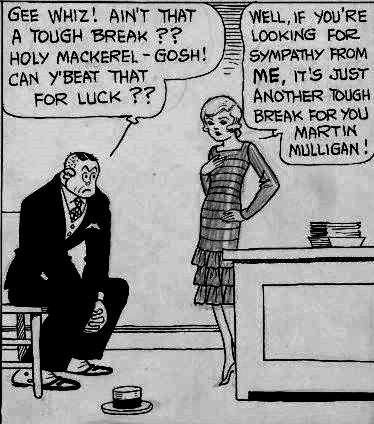 But it Winnie’s love life fascinated readers most. A working stiff wasn’t good enough for Winnie. She needed a rich man. Mike Mulligan, a working-class suitor, was constantly chasing Winnie. She liked the attention, but made clear that Mike couldn’t afford a wife like her. When he finally emerged as a respectable suitor (i.e. wealthy), he and Winnie’s wedding plans were crushed. He was arrested as a bootlegger.
But it Winnie’s love life fascinated readers most. A working stiff wasn’t good enough for Winnie. She needed a rich man. Mike Mulligan, a working-class suitor, was constantly chasing Winnie. She liked the attention, but made clear that Mike couldn’t afford a wife like her. When he finally emerged as a respectable suitor (i.e. wealthy), he and Winnie’s wedding plans were crushed. He was arrested as a bootlegger.
Other rich men who presented themselves as suitors were equally problematic. One was an old geezer. In another running storyline, Winnie was pursued by a stockbroker. But this romance fell apart when Winnie learns he is married and an aspiring bigamist.
Titillating
The men in Winnie Winkle didn’t fare well. And Branner’s ideas about what was right and wrong about the emerging consumer culture came through loud and clear. When Winnie takes up with Martin Mulligan (Mike’s cousin), all seems to be on the up-and-up. Martin is a champion prizefighter. But he loses Winnie’s respect when he declares his fortune is made because he just signed five contracts – not for fights, but for product endorsements. Winnie declares him a sissy.
The Winnie franchise expanded to short films in the 1920s and comic books, but for the most part she never was a big product endorser (though she one appeared on a cigar box).
Throughout the strip, Branner was careful to make Winnie beautiful, and he titillated his audience with scenes of her dressing and bathing. Risqué for the times, Branner satisfied censors by always showing a locked door behind Winnie whenever she was not fully clothed. Why show her undressing? There was a method to Branner’s madness: One survey showed slightly more men than women were regular Winnie Winkle readers.
Branner finally gave Winnie a family, but in typical fashion it had to come at a cost. In 1937 Winnie found her Mr. Right, literally. She married engineer Will Wright. With Will, Branner brought back one of his commonly expressed opinions: that vaudeville was superior to movies and radio entertainment. Will and Winnie tried to make it as vaudeville dancers for a time. But Branner shook up her world by having Wright disappear in World War II, leaving Winnie alone and pregnant with twins.
Turning Soapy
The storyline shocked some and lost the strip at least one newspaper, but it appealed to audiences who were very aware young men were dying in the war, leaving behind widows and orphans. Decades later, Will would return to the strip – he had amnesia and disappeared. But by then Branner had left Winnie Winkle. He had suffered a stroke in 1962, handing the strip to his assistant Max von Bibber.
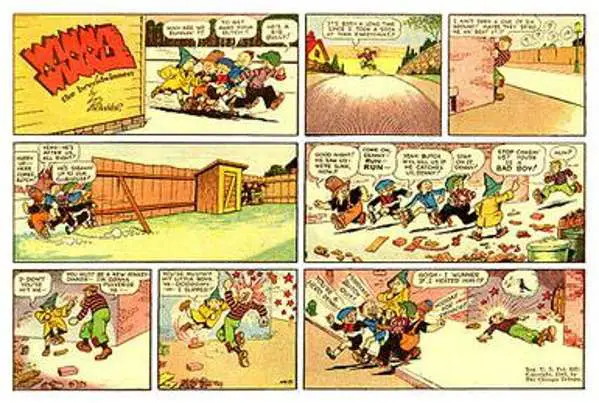
Winnie Winkle, 1943
Branner died in 1970. Over the years, the strip was continually updated. The style also changed. Branner stuck pretty closely to the one gag per day model, and for a while a group of Perry and his friends called “The Rinkeydinks” – Spike, Spud and Denny Dimwit – took center stage in the strip to provide the necessary humor.
But once out of Branner’s hands, the strip took on a soap opera style with pathos replacing humor. Winnie carried on until 1996, making it one of the longest running comic strips in history. At its peak, more than 150 newspapers carried Winnie Winkle.
Images: Martin Branner By http://strippersguide.blogspot.com/2006/09/ep-1939-martin-branner-bio.html, Fair use, https://en.wikipedia.org/w/index.php?curid=19494048. Engagement ring By http://www.lichtensteinfoundation.org/engagering.htm, Fair use, https://en.wikipedia.org/w/index.php?curid=35824004. Winnie Winkle 1943 By http://www.ilovecomixarchive.com, Fair use, https://en.wikipedia.org/w/index.php?curid=26252981.
This story last updated in 2022.
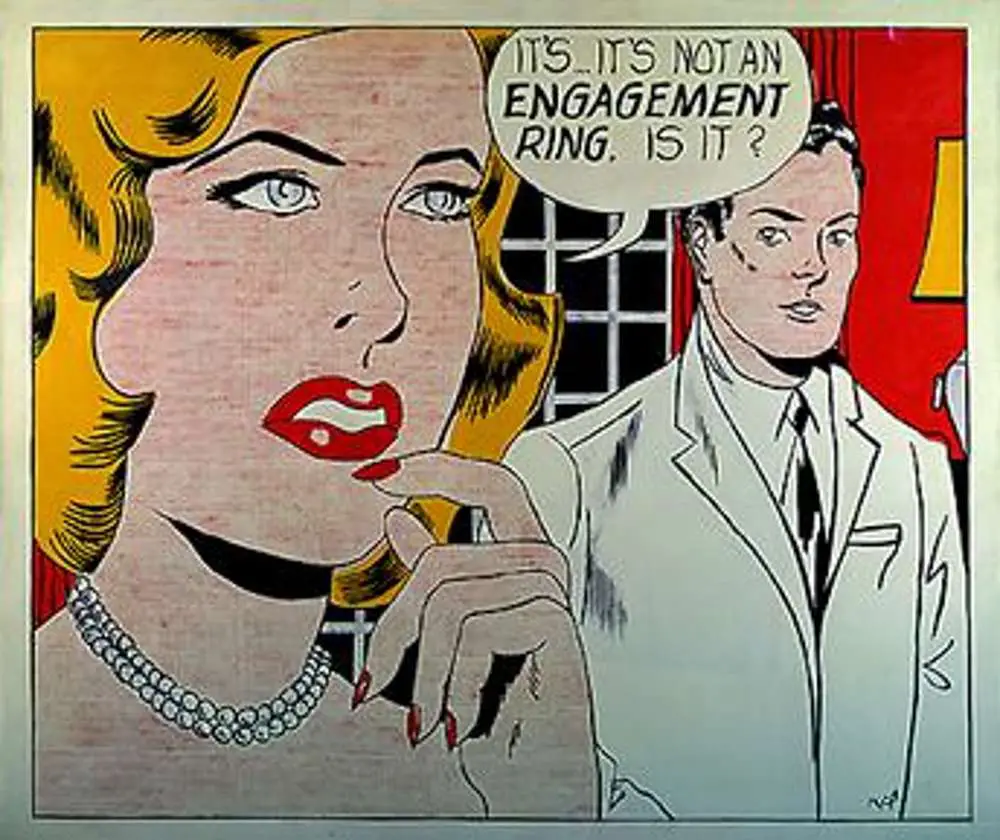
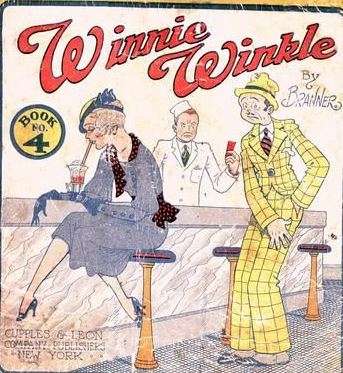
9 comments
This was my most fav cartoon strip in the 50s, and 60s, never saw it in any other state that I have moved to, since I was married, in the earrly sixties!!
The name is familiar and so is the picture but I done actually remember the cartoon strip. Was she ever called Wee Winnie Winkle?
I have vaguely heard of her also. Can you tell me what cigar box she appeared on? Was it a famous brand or perhaps a Connecticut company? My gr gr grandfather founded Martinez Cigar Co. in Ansonia in the 1800’s.
Federal Cigar Company, Red Lion, PA.
I vaguely recall her name, I was wondering if anyone knew what cigar box she was on? My gr gr grandfather had a cigar factory in Ansonia from 1870’s thru 1920’s. Martinez and sons.
Federal Cigar Co. , Red Line, PA
IS THERE ANY PLACE ON LINE WHERE THESE STRIPS CAN BE SEEN?
[…] the story of how Winnie came to be drawn by a former Vaudeville star when he tired of tripping the light fantastic […]
[…] gentle comic strips of the 1920s — Winnie Winkle, Moon Mullins and Gasoline Alley — were joined in the 1930s by super heroes, crime fighters, […]
Comments are closed.